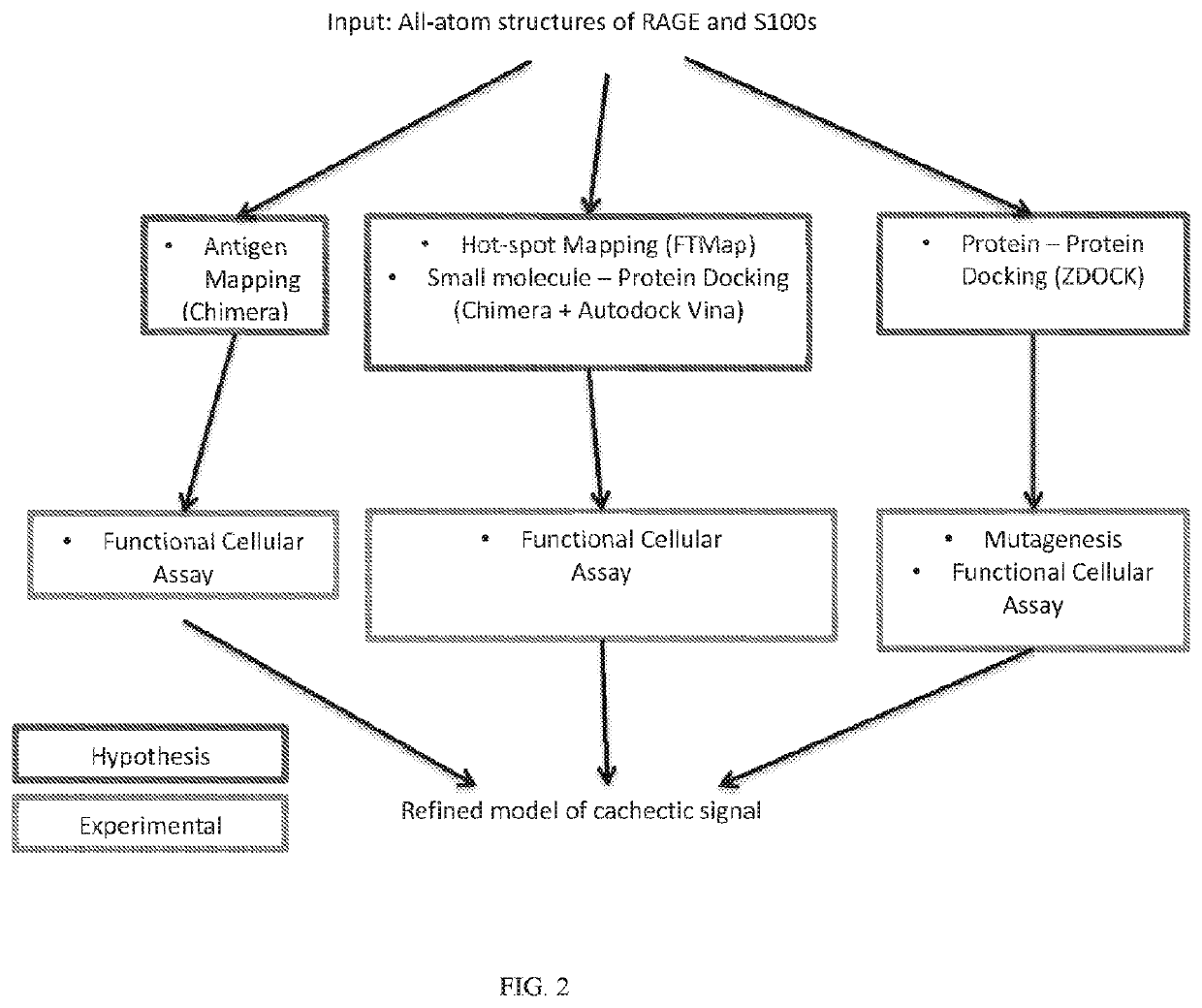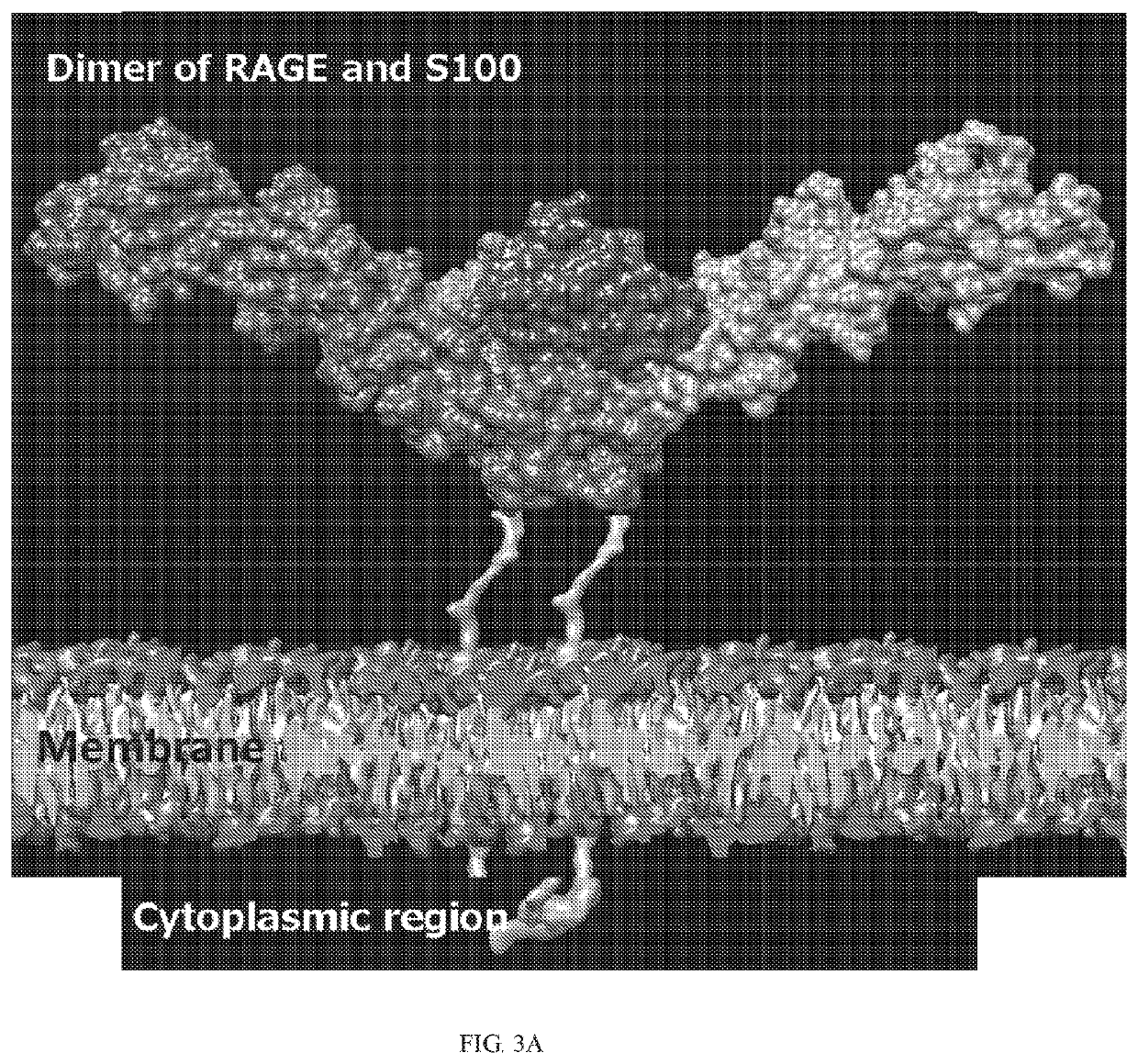Compositions and methods for treating cardiac dysfunction
a technology applied in the field of compositions and methods for treating cardiac dysfunction, can solve the problems of global health problems such as the inability to identify therapeutic agents with cardiac dysfunction-inhibiting or cachexia-inhibiting activity, and the urgent need for identifying therapeutic agents with cardiac dysfunction-inhibiting or cachexia-inhibiting activity, and achieve the effect of inhibiting the loss of myosin heavy chain in the cardiomyocyte and inhibiting the cachexia-associated cardiac dysfunction
- Summary
- Abstract
- Description
- Claims
- Application Information
AI Technical Summary
Benefits of technology
Problems solved by technology
Method used
Image
Examples
example 1
Identification of Functional Sites on RAGE Polypeptide
[0215]In studies described herein below, a refined model of the cachectic signal was obtained (FIG. 2). Functional sites on the RAGE polypeptide were determined using a combination of experiments mapping binding interface(s) of anti-RAGE antibodies with RAGE polypeptide using hydrogen-deuterium exchange (HDEX) reactions and cachexia functional assays. As described elsewhere herein, results of the cachexia functional assay indicate whether a candidate agent (e.g., a particular anti-RAGE antibody) has cachexia-inhibitory or cachexia-inducing activity, as measured, for example, by levels of myosin heavy chain in cells treated with the candidate agent relative to a control or baseline myosin heavy chain level.
[0216]The anti-RAGE antibodies were found to bind to various sites on RAGE (FIG. 4; FIG. 17). Results of screening of anti-RAGE antibodies in a mouse cachexia functional assay (left) and human cachexia functional assay are shown...
example 2
Prevention and Reversal of Cardiac Atrophy and Cardiac Dysfunction by Anti-RAGE Antibodies
[0224]In another set of experiments, anti-RAGE antibodies were shown to prevent and reverse cardiac atrophy and cardiac dysfunction in a clinically relevant model of human cardiac function. A cardiac cachexia model was generated using cardiomyocytes differentiated from induced pluripotent stem cells (iPS cells) (FIG. 13). Assessment of gene expression, protein markers, and electrophysiology of the cardiomyocytes was performed. The cardiac model generated was found to exhibit molecular and functional characteristics of cardiac tissue (e.g., similar gene expression signature, synchronized beating) (FIG. 13).
[0225]The cardiomyocytes were then treated or cultured in cachexia-inducing medium. FIG. 14 shows cachexia-induced cardiac atrophy. FIG. 14 shows a loss of myosin heavy chain in cardiomyocytes treated with a cachexia-inducing medium described herein (right) relative to cardiomyocytes not treat...
PUM
| Property | Measurement | Unit |
|---|---|---|
| volumes | aaaaa | aaaaa |
| volumes | aaaaa | aaaaa |
| volumes | aaaaa | aaaaa |
Abstract
Description
Claims
Application Information
 Login to View More
Login to View More - R&D
- Intellectual Property
- Life Sciences
- Materials
- Tech Scout
- Unparalleled Data Quality
- Higher Quality Content
- 60% Fewer Hallucinations
Browse by: Latest US Patents, China's latest patents, Technical Efficacy Thesaurus, Application Domain, Technology Topic, Popular Technical Reports.
© 2025 PatSnap. All rights reserved.Legal|Privacy policy|Modern Slavery Act Transparency Statement|Sitemap|About US| Contact US: help@patsnap.com



